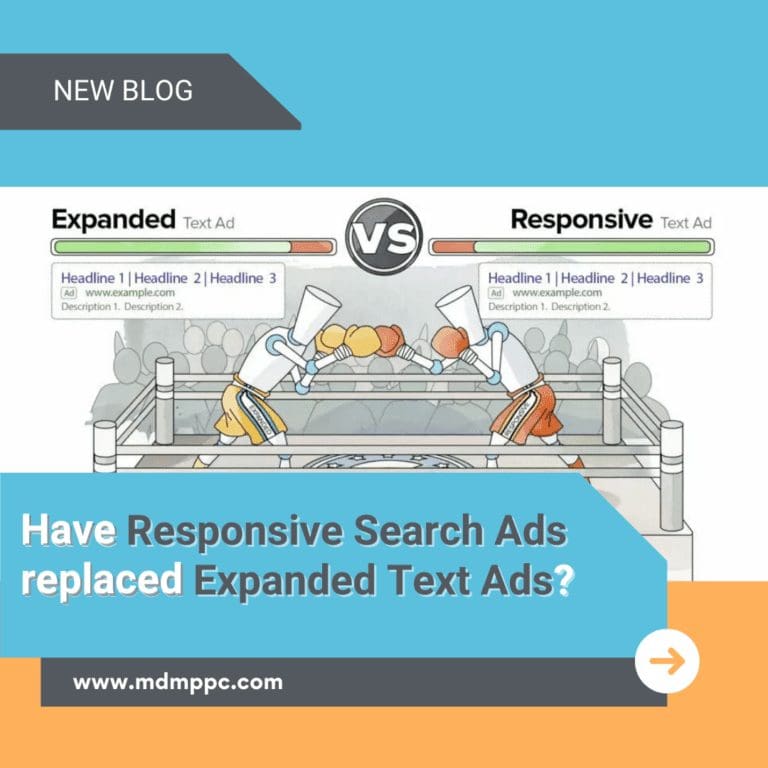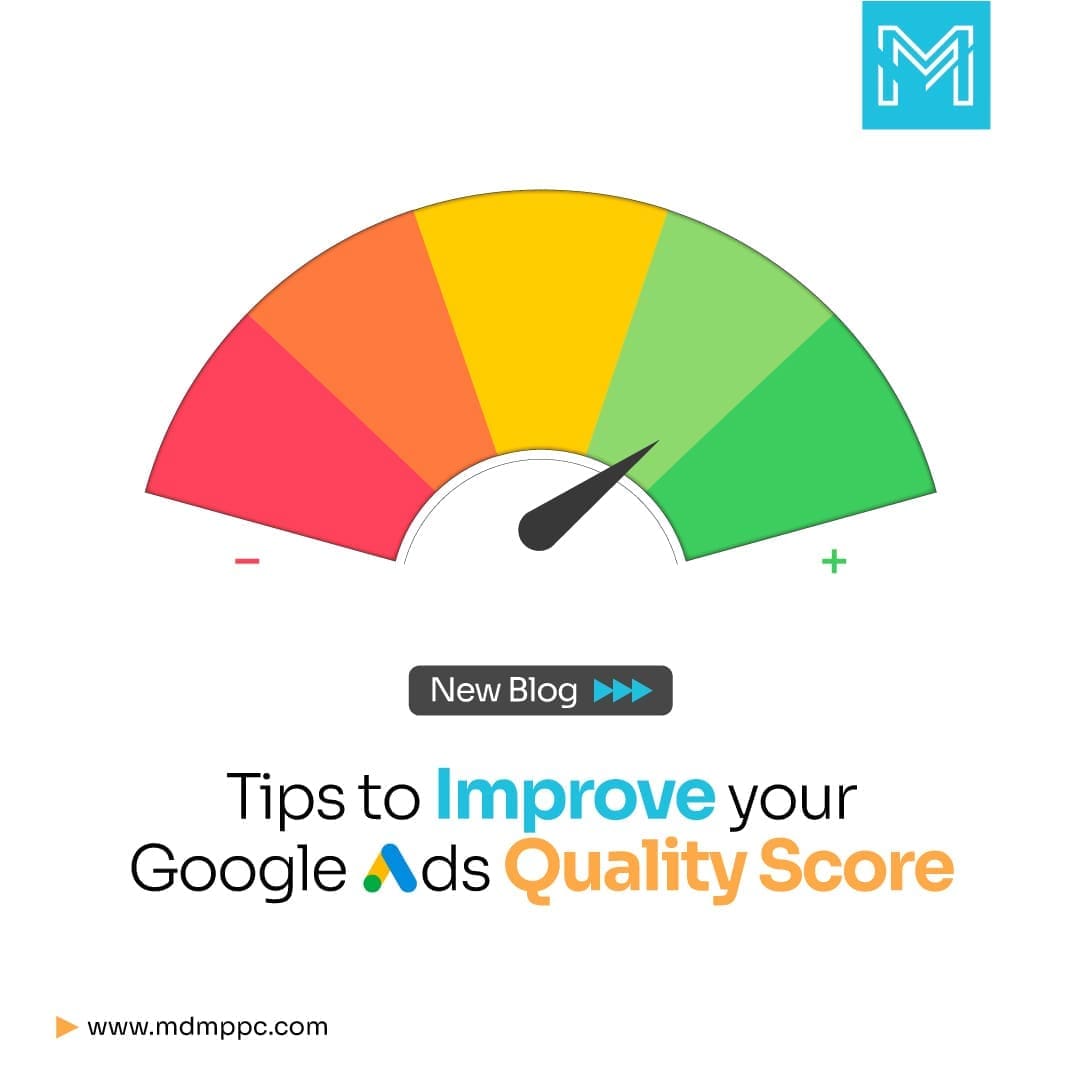Remind me again when Google took to announce that Responsive Search Ads (RSAs) will be the new default ad type in the Google Ads Search campaign.
On 18th February 2021, Google made the above announcement official, and just six months later, in August, it announced that the Expanded Text Ads (ETAs) would be retiring on 30th June 2022.
So this is pretty much what Google has to say about the RSAs.
- Advertisers who choose the responsive ads over the expanded text ads receive 7% more conversions, at the same ad Cost per Conversion ( CPC or CPCon).
- Buffer against the sudden market trends with better adaptability to changing consumer behavior
What does this change mean for advertisers who have been leveraging Google paid search advertising to promote their brand?
What are the best practices that you need to keep up with to ramp up your ROI with search advertising?
But before we jump at answering the above doubts you are having, I want you to put on your student cap! Let’s begin with a quick recap of what RSAs and ETAs are.
What is an ETA?
Expanded text ads(ETAs) can accommodate up to 3 headlines( max. 30 characters each), up to 2 descriptions( 90 characters each), two paths, and full control over text asset combination. This format was introduced in 2016, and by the time Google enriched the ETAs in 2018, the responsive search ads had just begun to enter the stage.
If you’re thinking about where the title ‘expanded’ comes from, it’s due to the fact that the option to add up to 3 headlines and 2 descriptions was added later only.
Now, have a look at the image here:
Source: Google
Three things here that you should be crystal clear about are:
- You can still create and test ETAs
- You can measure the performance of ETAs
- It’s up to you to pause and resume or even remove your expanded ads.
What are RSAs?
Responsive Search Ads(RSAs), now default google a type, were introduced in 2018, and they can accommodate up to 15 headlines( max. 30 characters each), 4 descriptions, and two paths.
This is what a responsive search ad setup looks like:
‘More relevant messages to your customers’- this is what RSAs best serve for. Using the data you provide in the ad headlines and descriptions, Google serves the most relevant ad to users. It helps automatically match the content in the ad to the user’s search intent.
RSAs are less time-consuming, and they allow you to focus more on optimizing ad campaigns on other Google channels.
What does this change mean for you?
One immediate effect you get to see is that you no longer see Expanded TextAds as an option when you click to ‘create a new ad.’ You get to see two options in the new default ad type- Responsive Search Ads and Call Ads.
So if you’re asking if this change is, by any measure, going to affect the way ads are served- the answer would be no.
However, Google suggests you add additional features in the ads set up as a more sustainable practice to maximize the performance of the responsive search ads.
Let’s have a look at those additional tools:
- Location insertion– This additional tool for responsive search ads shows the location of the user directly in the ad text.
Once it is set up, it will automatically display the city or state of the user based on the campaign’s location targeting so that your ad is served to the most relevant audience.
- Countdown customizer– You have a special offer on your products/services for your customers, and you want to get the word out. This is where a countdown customizer comes in handy when you want to create a sense of urgency without having to change the entire ad copy throughout the month.
You can insert the countdown feature in the headline or description or paths within a responsive search ad to get the clock ticking in days, hours, and minutes until the special offer ends. No more worrying about changing the ad copy specific to the offer and checking on the ads running.
Coming back to the expanded text ads, does this change indicate that ETAs will suddenly go obsolete, or will they stop performing?
No. On the contrary, testing with two expanded text ads and one responsive search ad in an ad group is recommended as one of the best Google practices.
You can still continue creating ETAs. Once you’ve created an RSA, click at the ‘Switch back to text ads’ appearing in blue at the top.
An in-depth look at benefits and drawbacks of Responsive Search Ads
While RSAs, with their added features and capabilities, dethroned the expanded text ads, they have their own set of challenges and potential.
For example, RSAs allow weak control over the ad copy. Every asset of headline and body copy has to stand out with their clear meaning, irrespective of their combination. Luckily, Google provides an option to ‘pin’ the asset version so that you can specify the order of the assets.
Pros of RSAs
- Given the extra space available( up to 15 headlines and 4 descriptions) and testing capabilities, RSAs are more flexible when it comes to text creation.
- Testing your ad copies and that too with more targeting to your potential customers is possible in much less time.
- You have an option to pin text assets for up to 3 headlines and 2 descriptions to specific positions in your RSA. However, it’s recommended to use this option only when necessary as it can also restrict the number of possible versions of ads Google can run to deliver the most relevant one.
- Advertisers see enhanced clicks and conversions up to 10% by adding RSAs to the ad groups.
- RSAs can be better at matching up to users’ queries, and this is why advertisers are implementing RSAs more often in their ad search campaigns.
Cons of RSAs
- You can’t view the final ad copy until it’s served, meaning Google assumes the charge in here, and you have lesser control on the actual ad text.
- RSAs work better for the generic campaign, but when it comes to granular campaign structure, RSAs are not the best fit.
- RSAs require more planning in the ad setup, and if you deviate from the suggested guidelines, you are risking potential customers by showing ‘irrelevant ads.’
Responsive Search Ads- Best Practices
You have to strategize your ad campaigns smartly as the assets can be organized in any combination. Incorporating Google’s best practices and leveraging them properly ultimately boost the conversions for your business.
- Use existing content from your current ETAs: It’s a greater likelihood that the existing ad content has already performed headlines and descriptions, and adding RSAs gives them a solid start.
That basically helps you to make data-driven decisions, and utilizing the already working ETA assets makes it much easier to create the RSAs.
- Test the potential of RSAs: Test the responsive search ads in high traffic ad groups, both with and without pinning content, to detect the unused potential.
- 2 ETAs and 1 RSA in every ad group: Allow Google to run the tests with RSAs while implementing the ETAs with a credible background in ad campaigns.
- Use relevant keywords: Maintain the relevancy across the user’s search experience and use the keywords that help Google to serve the most relevant ads in the customer’s search feed.
- Combinable text assets: You have to make sure that all text assets make sense when combined. You can also highlight the extra benefits you are offering in the text assets.
- Unique Headlines: It is recommended to incorporate as many headlines into your responsive ads. Though doing 15 headlines sounds a daunting number, provide at least 5 headlines that are unique to increase the chances of your ad being shown.
- Use pinning carefully: Pinning the ad assets to show them in a specific position in your ad is allowed and used for branding purposes but keep in mind to use it scarcely. Also, pin the ad text to positions that give meaning( headline 1,2, and description 1, respectively).
- Use cross-campaign asset reporting: This feature can help you examine the assets at a time and understand which of the ad assets resonate with the customer experience better and faster.
Final word
The digital marketing universe is complex, and it embraces changes quickly. So it’s no surprise to see Google announcing new features and updates about promoting a certain ‘ad strategy’.
We get the sense of urgency embedded in the phrase ‘default ads,’ but that is no reason for you to worry about losing conversions. If you want to stay ahead of the competition in online advertising, you need a PPC professional who understands the best Google practices, including RSAs.
At McElligott Digital Marketing, we have a dedicated team of industry experts, sharply updated with the changes in market trends and Google updates, and we’re here to help you grow your business.





